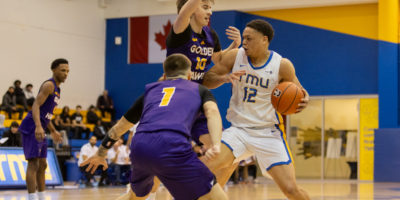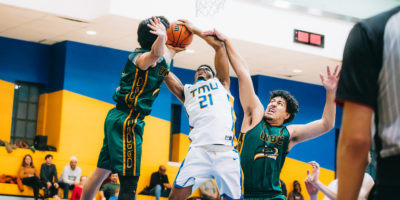By Noella Ovid
Ryerson University and St. Michael’s Hospital launched a 20-year-partnership through the Institute for Biomedical Engineering, Science and Technology, a new laboratory known as iBEST, on Jan. 26.
“We have a whole lot of faculty here in physics, engineering, biology etc. that do a lot of basic research. One of the things that the government has seen is that a lot of that research gets done but it never really goes away from the lab into the clinics,” said Michael Kolios, associate dean of science.
The collaboration brings together Ryerson’s engineering and science strengths with St. Michael’s research and clinical expertise. They research and develop new health-care solutions and support start-up biomedical companies seeking to improve patient care.
“It’s a very exciting initiative; it’s the first time I think [that] Ryerson is doing something in terms of research at [that] scale,” said Kolios. “It has that sexy thing with the Biomedical Zone also, which allows you to take things to the next level.”
Through individual researchers and graduate students, all the machines that have been accumulating at Kerr Hall for over 20 years were moved to the hospital. They also have access to other core facilities in the building which would otherwise be very expensive, Kolios said.
“If I’m here and they’re there and we never meet, that makes that process of getting things from the lab to the clinic much more difficult. The big idea with this iBEST is that they’re going to be together,” he said.
The 22,000-sq.-ft. laboratory will test practical ideas that can be brought to the patient’s bedside quickly. They’re focusing the research in four areas: advanced systems of delivering medications, creating new biomaterials and cell-based therapies, biomedical imaging at the cellular and tissue level and using creating tools that improve our understanding of massive amounts of health-care data.
One of the major projects at iBEST is Stephen Waldman’s research on growing cartilage to help victims of severe burns or accidents.
Instead of using synthetic or natural materials, Waldman uses the test animal’s own cells for reconstruction of the nose, outer ear and trachea.
“We plan to create biological constructs like biological graft material that we can generate from the patient’s own cells to be used in structure surgery,” said Waldman, a professor in the department of chemical engineering.
Waldman has been working on cartilage repair and reconstruction for the last 15/16 years and his research is now progressing through the preclinical stage.
Another project at iBEST by Karen Cross and Alexandre (Sasha) Douplik is based on assessing the risk of amputation.
They are currently working on three projects in developing a technique for early warning to avoid risks such as amputation. They are directed to wound care in patients who have diabetes as they undergo the most complications, said Douplik, associate professor, department of physics.
The projects are based on wave propagation, metabolic monitoring and monitoring of microcirculation and capillary pattern in wounds. They have developed a diagnostic device called Pulse Wave Velocity Imagining which doctors can use to monitor blood flow in the leg as an early detection tool to prevent limb amputation.
They have accomplished the first prototypes for two of the projects and are currently working on the last one before collecting data and applying for funding.
Along with the iBEST, Ryerson’s Biomedical Zone for early stage health-care companies is also built at the hospital to specialize in the development and commercialization of biomechanical products and technologies.
Komodo OpenLab is a corporation in the Biomedical Zone by Mauricio Meza, who completed his MBA degree at Ryerson.
They have created Telka, a device for anyone who does not have the hand dexterity to access a smartphone, tablet or computer.
They currently have over 2000 users in 22 countries and are developing a new product for the same target market (individuals with upper extremity impairments) at the Zone, wrote Meza, co-founder and CEO, via email.
“Our goal is to become the interface that all individuals with physical [impairments] use to interact with technology,” he said.
Both iBEST and the Biomedical Zone were designed as open-concept work spaces to facilitate brainstorming and sharing of ideas among people from different fields through a core centralized facility that is commonly run and shared.











Leave a Reply